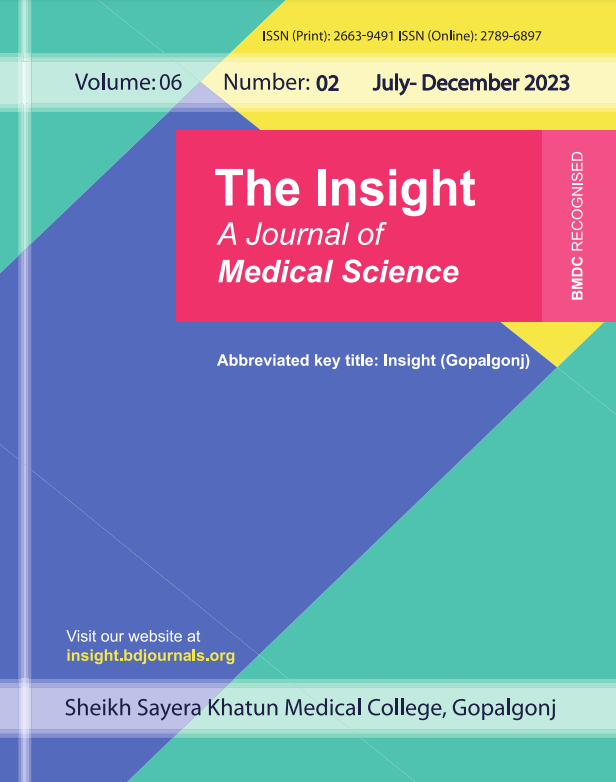Publiée 2024-10-18
Mots-clés
- Obstructed labor,
- Socio-demography,
- Fistula,
- Cesarean section
(c) Copyright The Insight 2024

Ce travail est disponible sous la licence Creative Commons Attribution 4.0 International .
Comment citer
Résumé
Introduction: Obstructed labor is one of the major causes of maternal mortality in Bangladesh. It is also responsible for a high rate of maternal and fetal morbidity. If we can identify the socio-demographic picture of obstructed labour in our country it may be helpful to find out the way to prevent this. This study aimed to assess the socio-demographic characteristics of those women who are victims of obstructed labor.
Methods and materials: It was a prospective observation study conducted in a 200-bed Hospital, Narayangonj from July 2010 to December 2010. A total of 100 cases of obstructed labor were selected for this study. Data were analyzed by descriptive analysis by statistical package for social science (SPSS) for Windows version 16.0.
Result: The more vulnerable age group for obstructed labor was 20-25 years 48% and 9% of the study population was within the teenage group. The majority of patients (74%) came from low socioeconomic class. The educational status of the patient was very low, 28% were illiterate and 42% were primary level of education. A majority (71%) of the patients were housewives. In 83% of cases, causes of delay in seeking care were economic constraints.
Conclusion: The social causes associated with obstructed labor are poor socio-economic status, lack of education, and unable to utilize health facilities. Socioeconomic status can have a significant impact on obstructed labor. Access to quality healthcare services, including prenatal care and skilled birth attendants, is often connected with socioeconomic status.



